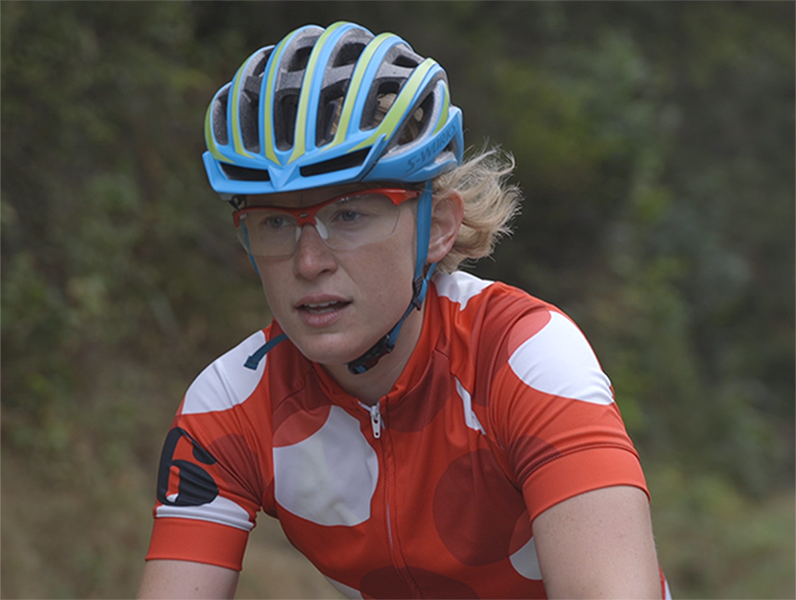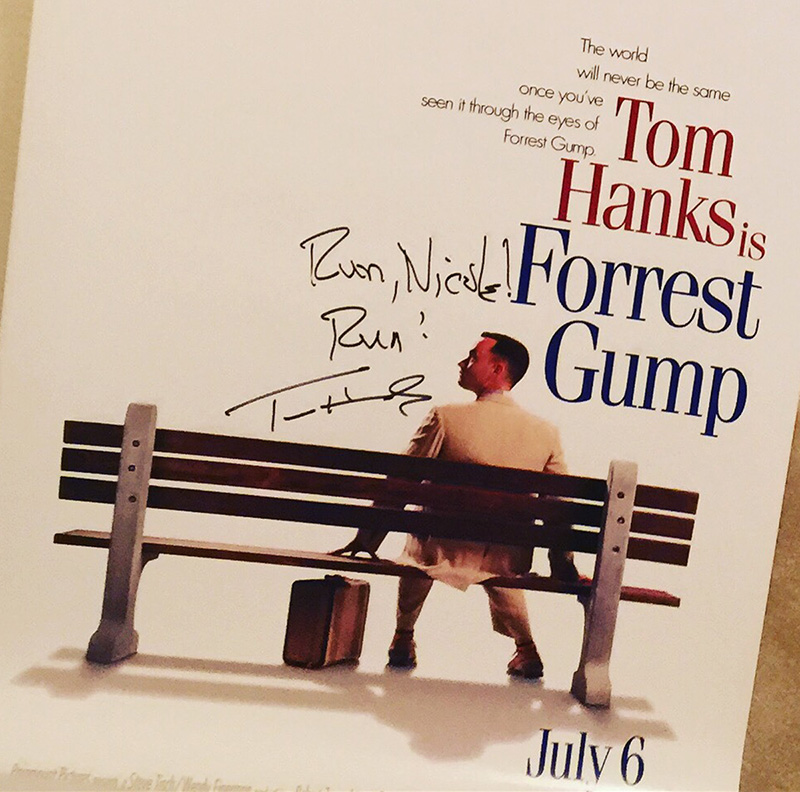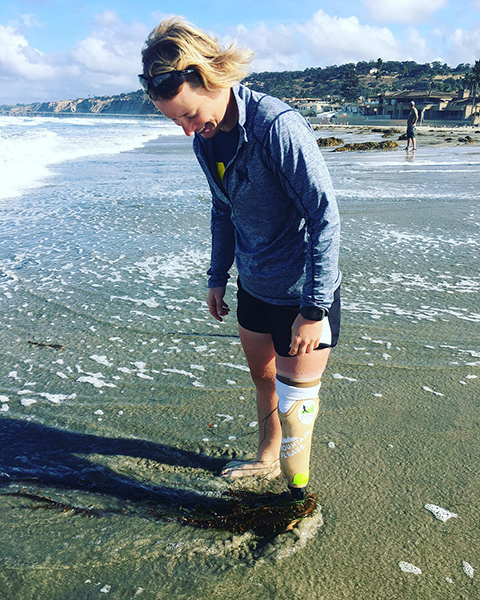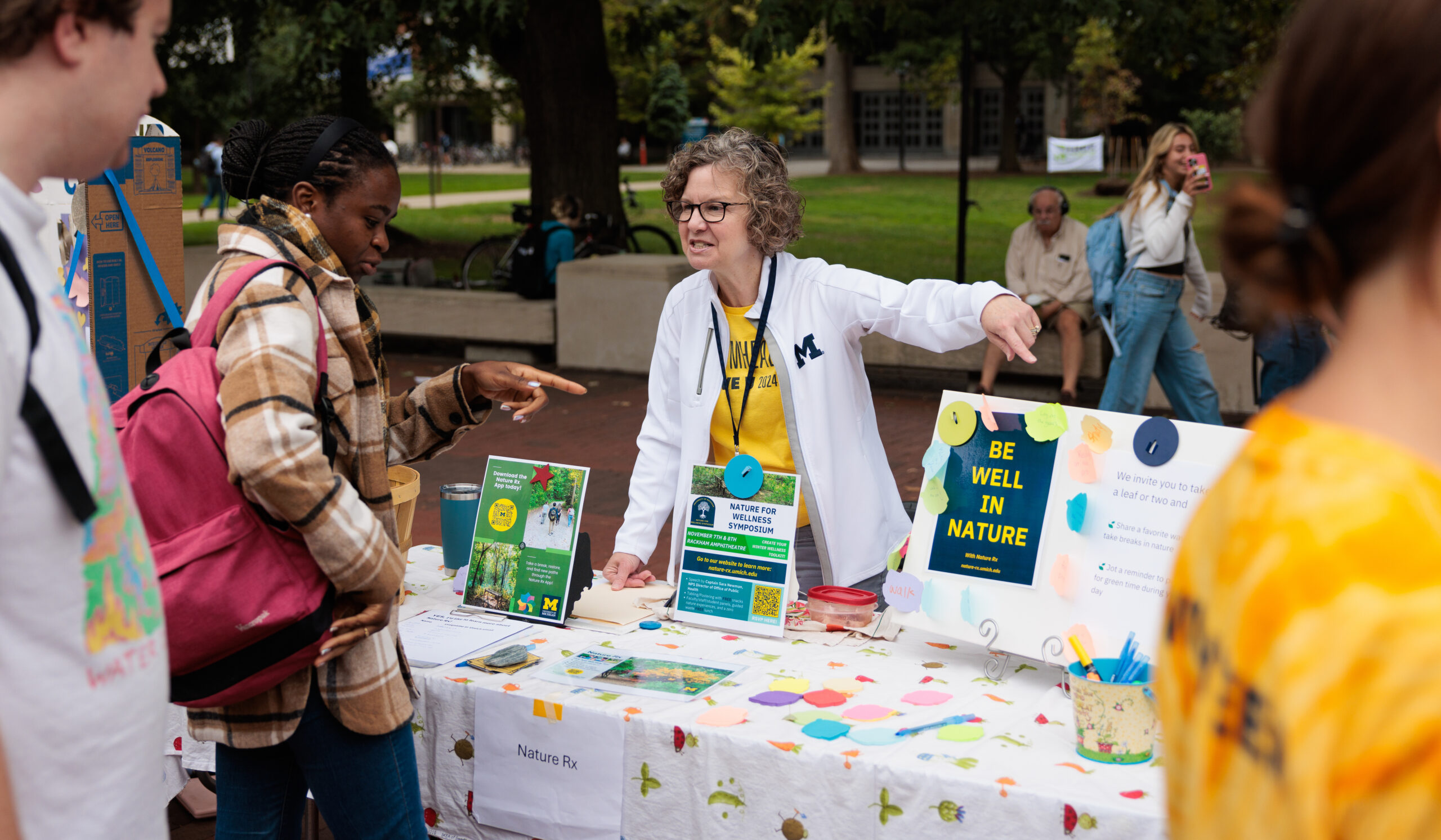Smoky wildfires and blistering heat. Towering cliffs and punishing elevation. Chilly water and the threat of sharks. Angry bulls in the middle of the road, and hairy tarantulas skittering across it. More than 1,500 miles of biking, running, and swimming—all on a prosthetic leg built for little more than a brisk walk.

“It was an incredible journey,” says Nicole Ver Kuilen, ’13, fresh off the endeavor she christened “Forrest Stump,” in cheeky tribute to one of her favorite films. Over eight weeks, she trekked down the Pacific coast, aiming to raise awareness of the limitations of current prosthetics and the barriers to access that many amputees face. Along the way, she learned the true extent of her own endurance—and the power of the Michigan network that supported her dream.
Ver Kuilen was 10 when she was diagnosed with osteogenic sarcoma, an aggressive bone cancer. Despite surgery and chemotherapy, the tumor in her left tibia continued to grow and her doctors had to amputate just below her knee. An athletic child, she refused to let the loss limit her. But bureaucracy and finances conspired to stand in her way.
“The biggest shock for me as a kid was that the prosthetic leg wasn’t waterproof,” Ver Kuilen says, explaining that the family’s insurer refused to cover the expensive upgrade that would have allowed her to swim. Around water, she could only put a plastic bag over it and try to be careful.
A few years later, Ver Kuilen made her high school’s varsity softball team. Meanwhile, the media was filled with images of world-class athletes who used specialized prosthetics called running blades to compete. One of those would not only enhance her own athletic performance, she realized, but cut down on the wear and tear her basic prosthetic was sustaining.
“Running is really, really hard on the leg,” she says. “It just breaks down all the time.”
Again, however, the insurance company denied her request.
Arriving at Michigan, Ver Kuilen decided that if she wanted to be a serious athlete she would have to push herself—and her leg. She began competing in 5K and 10K races, then half marathons and triathlons. She took off her leg for open-water swims and entered long-distance cycling events. Eventually, overcompensating with the right side of her body began to cause severe pain.

So earlier this year, Ver Kuilen applied for and won a grant from the San Diego-based Challenged Athletes Foundation for personal training that would strengthen her amputated leg and realign her body.
Through the foundation, she learned about the struggles of other amputees. Even an everyday prosthetic leg can cost $50,000. They generally last no more than five years, although with heavy use they can break down sooner. And in some cases, insurers determine that an amputee can have only one for a lifetime.
“There are amputees who can’t even get access to basic limbs!” Ver Kuilen says. “I wanted to be able to use my voice to do something.” So she decided to leave her job as a fundraiser at U-M’s School for Environment and Sustainability, and Forrest Stump was born.
The idea quickly gained momentum as the U-M community rallied around her. Her friends Kathleen Wang, ’13, MS’15, and Natalie Harold, a prosthetics resident at the University, agreed to make the trek with her. Greg Kaplan, ’08, treasurer of California-based Specialized Bicycle Components, hooked the team up with more than $2,000 worth of gear. Snowday Productions, a film company founded by three U-M alumni, decided to make a documentary.
“This has been such a Michigan story,” Ver Kuilen says, “on so many levels.”
The journey, which kicked off Sept. 1, was not without perils. In Oregon, Harold crashed her bicycle and wound up with her arm in a sling. Ver Kuilen lost her goggles in San Francisco Bay during a swimming event with the ominous name “Sharkfest.” Near Big Sur, a rock slide blocked their planned route, forcing the team on an off-road excursion through a cattle ranch, where a trio of bulls blocked their progress for an alarming 20 minutes.
“They looked really aggressive,” Ver Kuilen says, “and they just would not move!”

Her leg survived despite serious wear and tear, although her carbon-fiber foot began to break down north of San Diego. (Fortunately, the prosthetics company Endolite had donated a backup.) For Ver Kuilen, the damage drove home the importance of her mission.
Although one journey is behind her, another has yet to begin, as she builds Forrest Stump into a nonprofit that will bring her message, along with the documentary, to decision-makers in Washington, D.C.
Her athletic ambitions are now a step closer to reality, thanks to the Icelandic orthopedics company Össur, Microsoft, the Challenged Athletes Foundation, and the Washington-based Cornerstone Prosthetics & Orthotics, which teamed up to present her with her own running blade at the finish line. But Ver Kuilen knows that without policy changes, even the most generous donors cannot ensure that every amputee has the opportunity to compete.
“Getting that running blade feels like a huge game changer for me,” she says. “And that’s why Forrest Stump is so important. We want to provide more amputees with the same feeling that they can do anything.”
Amy Crawford is a freelance writer whose work has appeared in Smithsonian magazine, The Boston Globe, and Nature Conservancy magazine. Follow her on Twitter @amymcrawf.





